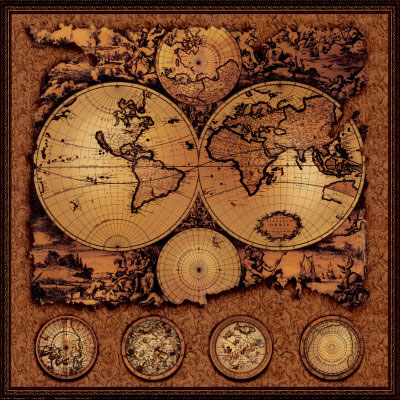Why Maps Are Fine Art

“The character and technology of mapmaking may have changed over the centuries, but the potential of maps has not. Maps embody a perspective of that which is known and a perception of that which may be worth knowing.”
John Noble Wilford from The Mapmakers
Evidence suggests that the first maps evolved independently in separate parts of the earth. Marshall Islanders made stick charts for navigation. Pre-Columbian maps in Mexico used footprints to represent roads. Early Eskimos carved ivory coastal maps. Incas built relief maps of stone and clay. Chinese literature contains references to maps as early as 7th century B.C.
Whether maps were sketched on animal skins or carved on clay tablets, wood or leather – it was clear that even early maps were functional tools and graphic works of art. As map making techniques improved, so did the cartographers’ skill and ability to create intricate works with great visual interest.
Today, maps have moved to the digital realm online and on our mobile devices. A printed map is a rarity, my kids will probably call printed maps “paper GPS.” Digital maps have become commonplace, often only given attention to when Mapquest sends you to the wrong place. I believe it’s increasingly important to appreciate the graphic qualities of this 8000 year old art, even though maps are easy to ignore.
But an interesting graphic quality isn’t enough to qualify as a “work of art.” The work also needs to elicit an emotional response. Good thing maps are such great storytellers. Maps show you how things were, where you have travelled, the places that you remember from your childhood, the way you walked to class, and the places that are important to you. Maps wisk you to another place and time and allow you to retrace where you’ve been and how these places make you who you are.
We hope you enjoy these prints as much as we have enjoyed making them.
Your map makers,
Katie and Tony Rodono
“It is a very human story of heroics and everyday routine, of personal and national rivalries, of influential mistakes and brilliant insights, of technological innovation and a passion to explore and understand Earth and the universe.” ~ John Noble Wilford from The Mapmakers
